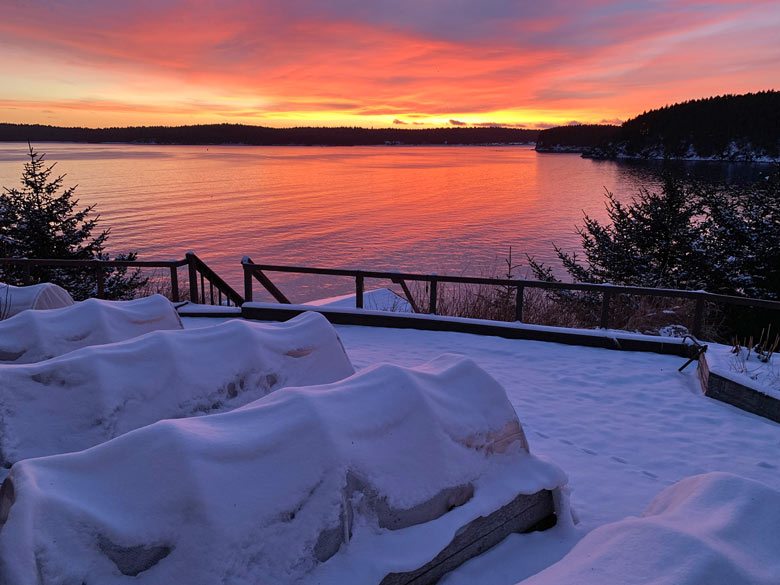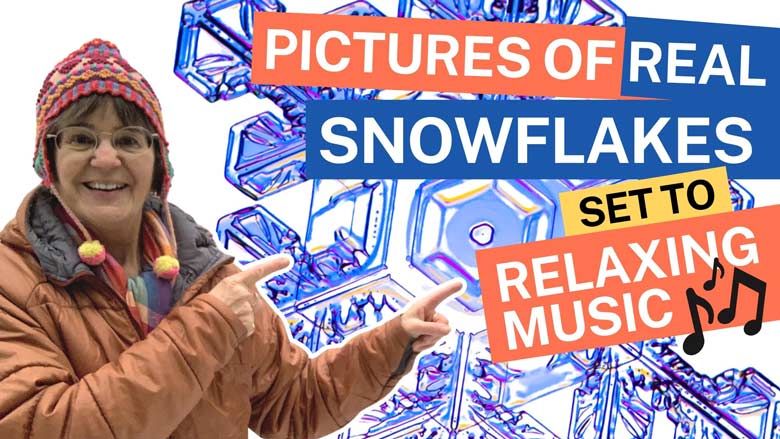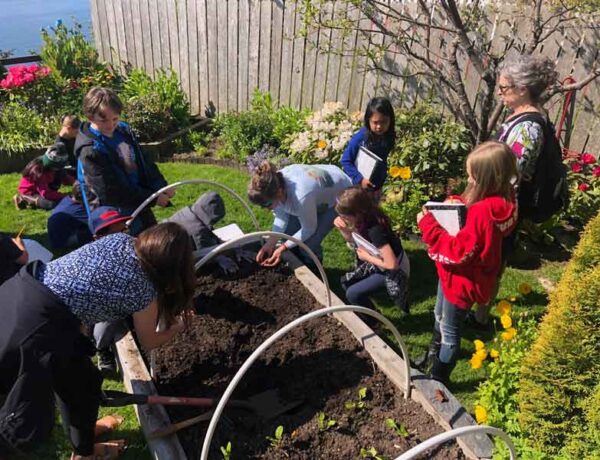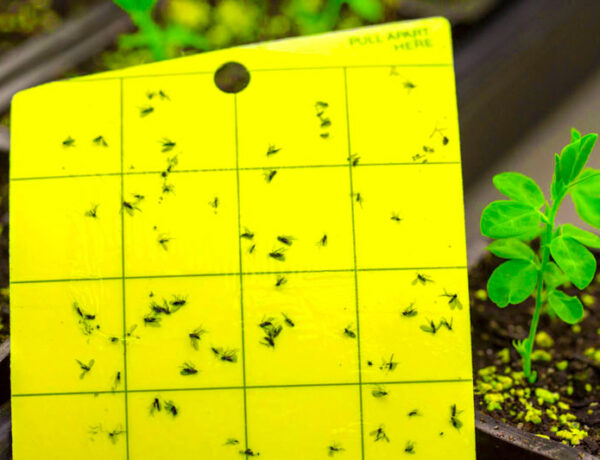Given a choice between celebrating the Winter Solstice or the New Year, the solstice would win, hands down. More significant to me is the return of light. And if you’re like most people, dispelling darkness in the middle of winter is a real thing.
I think back to a conversation with my dear friend, Jill Shepherd, former senior editor… of Alaska magazine.
She lived in Anchorage, where winters can be a real thing, too.
One time she called me, beaming with news.
“It finally snowed here,” she said. “And my mood has improved, too.”
“How’s that?” I asked.
“Snow reflects so much light, even at night,” she said. “Until it snows, the trees, the ground, everything is dark, dark, dark. I didn’t realize how dark it was.”
Maybe it’s because I’m thinking of next year’s seedlings (more on that later) or I’m dreaming of warm sunlight on my face, but I know I’m not alone in craving light this time of year.
[Hi there, it’s Marion. This article was originally published in the Kodiak Daily Mirror, the hometown newspaper for Kodiak, Alaska. Go here to access the archive page for the list of my past columns, written each week since 1986].
The dance of Winter solstice
On an emotional, spiritual and physical level the winter solstice has a greater impact on me than turning the calendar from December to January. The passing of winter solstice though is something one can feel. (Though some might argue that given enough wine or beer, New Year’s can be felt, too). This year’s solstice (the word means standing still) falls on Tuesday, December 21 at 6:59 AM Alaska Standard Time. At that moment of standing still, or pausing, a door opens, just a crack, allowing a sliver of light to enter and dance. Darkness flees.
And though it will be the first day of winter, I just might set my alarm and raise a cup of coffee to the return of light.
Jill Shepherd told me how years ago, Alaska magazine reported that people afflicted with depression, anxiousness, and other symptoms of Seasonal Affective Disorder (SAD) got relief by wearing rose-colored glasses. It seems that the tinted glasses provide color wavelengths that are missing from winter’s low and brief periods of sunlight.
[perfectpullquote align=”full” bordertop=”false” cite=”” link=”” color=”” class=”” size=””]”In the depths of winter, I finally learned that within me there lay an invincible summer.” —Albert Camus[/perfectpullquote]
Plants, which use sunlight as the energy source for making their own food, are also affected by light. Many plants have internal biochemical clocks that measure the photoperiod, or hours of daylight, and use this information to time growth responses. Perennials and woody plants sense shortening day length in the fall as a signal to drop their leaves, harden their buds, and prepare for dormancy.
Thing is, the past few weeks in Kodiak have already felt like winter! As for your plants, if you provided some protection by covering them with spruce boughs or mulching with compost or straight leaves, you’ve little to worry about.
Without a protective covering though, cold winds and the dreaded freeze-thaw cycle which can appear any time between now and Spring Equinox, can cause a lot of damage to perennials and bulbs. Note to procrastinators: It’s not too late to round up some evergreen boughs (recycle your Christmas tree) or gather some leaves and kelp.
New video: Real snowflakes set to music
While on the subject of plants surviving the winter, now is the time to hope for more snow. Snow, as poor man’s mulch, provides critical insulation. The temperature under a layer of snow is usually much warmer than the outside air. Plants won’t dry out as quickly and earthworms can continue doing their good deeds of breaking down and adding organic matter to the soil.
Speaking of snow, I just created a video about snowflakes, where I set my snowflake images to music. You can find it on my new YouTube channel called It’s Never Too Late.
Why you might feel a little off
If you’re feeling a little off-kilter these days, blame it on the earth’s orbit. If you recall your elementary school science, the earth leans on its axis like a spinning top frozen in a tilted position. (I like to visualize it another way: a cowboy standing in front of a campfire [the sun] and leaning away from it).
This ‘planetary pose’ is a mere 23 degrees and 27 minutes off the perpendicular to the plane of orbit, yet it’s enough to alter our seasons as we know them.
Not only does the earth tilt away from the sun, but as we approach the winter solstice, the earth’s orbit creeps closer to the sun. In fact, we’re actually nearer the sun in January than in June—by three million miles.
So why do we have to wear wool scarves and heavy jackets if we’re closer to the sun? It’s the tilting away from the sun that determines how many precious hours and minutes of sunlight each hemisphere receives. For us in the northern hemisphere, it cancels out any warming effect we might achieve by cruising closer to the sun. Hence, the days are shorter, the temperatures cooler, and the sun has its lowest arc in the sky.
[perfectpullquote align=”full” bordertop=”false” cite=”” link=”” color=”” class=”” size=””]“Do planning in spring, learning in summer, execution in autumn, and enjoy your success in winter.” — Unknown[/perfectpullquote]
From winter solstice to thoughts of spring
I can hardly wait for December 21. And a little snow would help.
Meanwhile, think spring!
Begin drawing up your seed wish list. Check it twice. If you’re thinking veggies, here’s a starter list of easy-to-grow vegetables for cool climates:
- Cress: My favorite: Wrinkled Crinkled Crumpled cress.
- Kale: All varieties love Kodiak.
- Broccoli: All varieties thrive here.
- Carrots: Orange, yellow, purple, white; round or wedged.
- Potatoes: Gold, blue, white, red, fingerling, giant, regular.
- Spinach: One of the best green for Kodiak and for you.
- Swiss chard: Easy to grow, beautiful and recipe-friendly.
- Onions family: Bulb and green onions, chives, garlic, and leeks.
- Lettuce: All varieties.
- Radishes: Give them a second chance.
- Peas and beans: Yes and yes.
- Mustard and Asian greens: All varieties love Kodiak.
- Turnips: All-time favorite: Hakurei.
- Beets: All beets!
- Tomatoes: Smaller varieties are best in our cool summers. Require a greenhouse or hoophouse.
- Cucumbers and Zucchini: Also require a greenhouse or hoophouse.
My friend Jill was an avid gardener. Her apartment, though small, was home to elegant blooming Clivias (KLY-via) and geraniums. One of the last things we talked about before she passed away a couple of years ago was garden-related. “I want to move my hanging baskets to where they can get more light.”
Merry Christmas, Kodiak. Celebrate the Light!
-=-=-=-=-
Dear readers, Once again, I hope you enjoyed this sneak-peek into life on Kodiak Island.
Have a wonderful week…

Hi gardeners! Want to create your dream garden? You can do it, step-by-step with Marion Owen: The Gardener’s Coach. Visit my YouTube channel: The Gardener’s Coach.
Compost is the answer to everything in the garden!
And if you have enough of it, you won’t need much of anything else. To learn more, take my 60-second assessment.
PS Join the waitlist for my next composting webinar. It’s free. Check out my Joy of Composting Facebook page. If you’d like to drop me a note, here’s my email address: marion (at) marionowenalaska.com.






1 Comment
Kathleen Pearson
December 23, 2021 at 10:02 AMA joy to read! Thanks, Marion 🙂